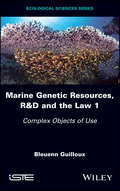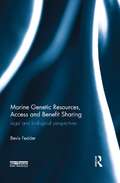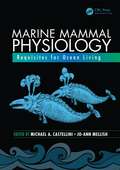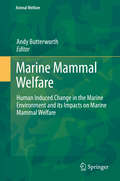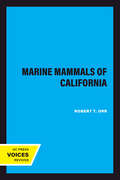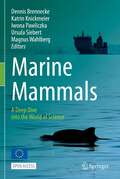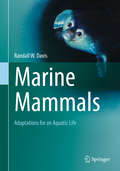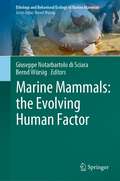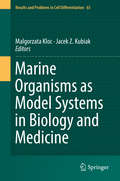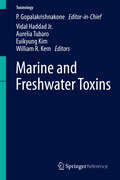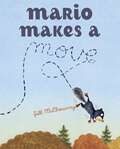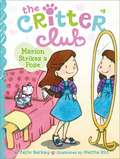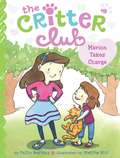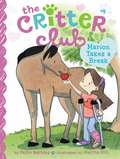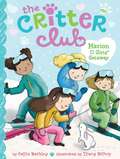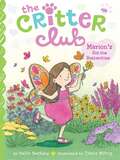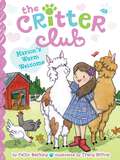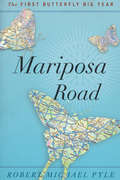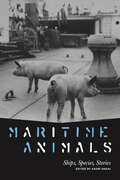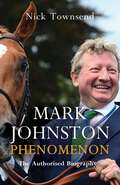- Table View
- List View
Marine Genetic Resources 1
by Bleuenn GuillouxAdvances in research and development reveal the immense diversity and potential of marine genetic resources. Under international law, no specific regime applies to these complex and paradoxical objects of use. The Law of the Sea Convention sets a framework that is partly inadequate for this new category of resources. The Biodiversity Convention and the Nagoya Protocol only address the genetic resources of national areas. Patents allow their holder to exercise a monopoly on exploiting biotechnological creations to extensive claims, questioning the common nature of biodiversity and related knowledge. They hinder research and the objectives of biodiversity law. The legal and practical rules of physical and functional access vary in geometry. They focus on the valorization of research results, crystallizing conflicts of interest between suppliers and users. Sustainable research and development is essential to the knowledge and protection of marine biodiversity. The qualification of marine genetic resources in common, standard contractual tools, distributed research and development infrastructures, negotiation of an agreement on sustainable use and conservation of biodiversity beyond the limits of national jurisdiction, would To remove these inconsistencies.
Marine Genetic Resources, Access and Benefit Sharing: Legal and Biological Perspectives
by Bevis FedderAccess to genetic resources and Benefit Sharing (ABS) has been promoted under the Convention on Biological Diversity, with the aim of combining biodiversity conservation goals with economic development. However, as this book shows, since its inception in 1992, implementation has encountered multiple challenges and obstacles. This is particularly so in the marine environment, where interest in genetic resources for pharmaceuticals and nutrients has increased. This is partly because of the lack of clarity of terminology, but also because of the terms of the comprehensive law of the sea (UNCLOS) and transboundary issues of delineating ownership of marine resources. The author explains and compares relevant provisions and concepts under ABS and the law of the sea taking access, benefit sharing, monitoring, compliance, and dispute settlement into consideration. He also provides an overview of the implementation status of ABS-relevant measures in user states and identifies successful ABS transactions. A key unique feature of the book is to illustrate how biological databases can serve as the central scientific infrastructure to implement the global multilateral benefit sharing mechanism, proposed by the Nagoya Protocol. The research for this book was supported by both the Bremen International Graduate School for Marine Sciences (GLOMAR) and the International Research Training Group INTERCOAST – Integrated Coastal Zone and Shelf-Sea Research.
Marine Mammal Physiology: Requisites for Ocean Living (CRC Marine Biology Series)
by Michael A. Castellini Jo-Ann MellishSuppose you were designing a marine mammal. What would you need to think about to allow it to live in the ocean? How would you keep it warm? What would you design to allow it to dive for very long periods to extreme depths? Where would it find water to drink? How would you minimize the cost of swimming, and how would it find its prey in the deep an
Marine Mammal Welfare
by Andy ButterworthMarine mammals attract human interest – sometimes this interest is benign or positive – whale watching, conservation programmes for whales, seals, otters, and efforts to clear beaches of marine debris are seen as proactive steps to support these animals. However, there are many forces operating to affect adversely the lives of whales, seals, manatees, otters and polar bears – and this book explores how the welfare of marine mammals has been affected and how they have adapted, moved, responded and sometimes suffered as a result of the changing marine and human world around them. Marine mammal welfare addresses the welfare effects of marine debris, of human traffic in the oceans, of noise, of hunting, of whale watching and tourism, and of some of the less obvious impacts on marine mammals – on their social structures, on their behaviours and migration, and also of the effects on captivity for animals kept in zoos and aquaria. There is much to think and talk about – how marine mammals respond in a world dramatically influenced by man, how are their social structures affected and how is their welfare impacted?
Marine Mammals of California (California Natural History Guides #29)
by Robert T. OrrThis title is part of UC Press's Voices Revived program, which commemorates University of California Press’s mission to seek out and cultivate the brightest minds and give them voice, reach, and impact. Drawing on a backlist dating to 1893, Voices Revived makes high-quality, peer-reviewed scholarship accessible once again using print-on-demand technology. This title was originally published in 1972.This title is part of UC Press's Voices Revived program, which commemorates University of California Press’s mission to seek out and cultivate the brightest minds and give them voice, reach, and impact. Drawing on a backlist dating to 1893, Voices Revived</DIV
Marine Mammals: A Deep Dive into the World of Science
by Dennis Brennecke Katrin Knickmeier Iwona Pawliczka Ursula Siebert Magnus WahlbergThis highly-readable Open Access textbook provides basic background information about marine mammals and anthropogenic impacts on them. The book includes inspiring exercises for education school programs in natural sciences. The book also provides advice on career paths using case studies of marine scientists and veterinarians describing their journeys from student to profession. By sharing real-life career paths, readers find answers to questions such as “What needs to be considered when choosing a career in science?” and “What kind of tasks do scientists undertake on a daily basis?” Marine mammals are amongst some of the most celebrated creatures on Earth, with their high intelligence, social and communicating skills, and capacity for deep diving. Alongside general information about marine mammals, the book aims at generating awareness of the impact of litter and noise pollution on the marine environment using marine mammals as an example. Huge numbers of marine animals, including marine mammals, die every year from entanglement in fishing gear, by ingestion of litter or because of chemical pollution. In the last decade many technological and scientific tools have been developed to aid research, for instance miniaturised sound recorders which can be attached to cetaceans and seals and record noise levels around them, their vocal production as well as their diving behaviour. This Open Access textbook can be used by undergraduate students interested in the fundamentals of marine mammal biology and medicine, and in pursuing the profession of a marine scientist.
Marine Mammals: Adaptations for an Aquatic Life
by Randall W. DavisThis comprehensive book provides new insights into the morphological, metabolic, thermoregulatory, locomotory, diving, sensory, feeding, and sleep adaptations of Cetacea (whales and dolphins), Pinnipedia (seals, sea lions and walrus), Sirenia (manatees and dugongs) and sea otters for an aquatic life. Each chapter reviews the discoveries from previous studies and integrates recent research using new techniques and technology. Readers will gain an understanding of the remarkable adaptations that enable marine mammals to spend all or most of their lives at sea, often while hunting prey at depth.
Marine Mammals: The Evolving Human Factor (Ethology and Behavioral Ecology of Marine Mammals)
by Bernd Würsig Giuseppe Notarbartolo di SciaraThe seventh volume in the series “Ethology and Behavioral Ecology of Marine Mammals” describes aspects of the often-complex relationship between humans and marine mammals. From a primeval condition of occasional predators, during the last century humans have become a major factor negatively affecting the status of most marine mammals through over-hunting, habitat encroachment and environmental degradation. This has led to the extirpation of many marine mammal populations and even to the extinction of species. However, in parallel to this destructive drive, since antiquity humanity has been influenced by a strong fascination for marine mammals, which contributes today to an increased human appreciation of the natural world admixed with widespread concern for its degrading condition. The special status occupied by marine mammals in human imagination and affection stands in stark contrast with the current predicament of many populations still threatened by the doings of Homo sapiens: a condition emblematic of the relationship of humanity with nature, and key to understanding where humanity is heading.
Marine Organisms as Model Systems in Biology and Medicine (Results and Problems in Cell Differentiation #65)
by Jacek Z. Kubiak Malgorzata KlocThis book highlights the potential advantages of using marine invertebrates like tunicates, echinoderms, sponges and cephalopods as models in both biological and medical research. Bioactive compounds found in marine organisms possess antibacterial, antifungal, anti-diabetic and anti-inflammatory properties, and can affect the immune and nervous systems. Despite substantial research on the medicinal attributes of various marine invertebrates, they are still very much underrepresented in scientific literature: the majority of cell, developmental and evolutionary scientific journals only publish research conducted on a few well-known model systems like Drosophila melanogaster or Xenopus laevis. Addressing that gap, this book introduces readers to new model organisms like starfish or nemertera. By showing their benefits with regard to regeneration, stem cell research and Evo-Devo, the authors provide a cross-sectional view encompassing various disciplines of biological research. As such, this book will not only appeal to scientists currently working on marine organisms, but will also inspire future generations to pursue research of their own.
Marine Otter Conservation
by Liliana Ayala Raúl Sánchez-Scaglioni Gonzalo Medina-VogelThis book offers a multidisciplinary approach to conservation issues related to the marine otter (Lontra felina). The main goal is the systematization of different research efforts on this species, to contribute with conservation policy design and implementation. The authors contribute their achievements in conservation, ecology, status in freshwater habitats, habitat fragmentation effects, interaction with human activities and recommendations for an effective conservation of the species. The book is directed first and foremost towards researchers and authorities and people involved in conservation tasks of otters.Despite in the last decades some studies and efforts on Lontra felina has carried in Peru and Chile, some information can be gathered to fill the gaps on marine otter conservation in Peru. That is the main goal of the book Conservation of Marine Otter. Moreover, the publication will be the first book published at international level on Lontra felina with the participation of several experimented researchers on this threatened and endemic species.
Marine Science
by Thomas F. GreeneWritten for high school students, this book provides complete coverage of a one-year high school course in marine biology/oceanography.
Marine and Freshwater Toxins
by P. Gopalakrishnakone Vidal Haddad Jr. Aurelia Tubaro Euikyung Kim William R. KemThis book presents the structure of the main toxins of aquatic origin, their distribution, producing species and vectors, their mechanisms of action, the clinical aspects of envenomation in humans, their effects in laboratory or wild animals, their toxicokinetic properties, including the relevant treatment, detection methods and regulatory aspects for management. The work also presents the main species associated with the injuries, poisonings their toxins, mechanism of action and the clinical aspects of the envenomations by aquatic animals and discusses the actual measures utilized in the first aid and hospital treatments. Marine toxins such as palytoxins, brevetoxins, saxitoxin, ciguatoxins, okadaic acid, azaspiracid toxins, equinatoxins are also dealt with in this volume. These toxins can be lethal as well as having a complex and large molecular structure and display mechanisms by which they act very specifically on targets, receptors or on critical body proteins. The marine and freshwater environments are the new frontiers of humanity, but the increase of economic and tourist activities provoke nasty encounters between aquatic animals and humans. The main victims are swimmers, professional and sportive fishermen, surfers and scuba divers as well as people working in related fields. The identification, knowledge and treatment of envenomations caused by venomous and poisonous animals are not adequate and the prevention of injuries still is not possible. Additionally, the immense potential of the pharmacologic effects of their toxins is not fully explored. Toxins of venomous aquatic animals can cause proteolysis, myotoxicity, hemotoxicity (mainly hemolysis), cytotoxicity and neurotoxicity. The neurotoxicity is generally associated with toxins of dinoflagellates and cyanobacteria, present in poisonous and/or contaminated invertebrates and fish.
Mario Makes a Move
by Jill McElmurryAccording to Publishers Weekly in a starred review, this picture book "capture[s] the exuberance of the creative spirit alongside the quirks of a character accepting his limitations." Mario is a squirrel who loves to invent amazing moves, like the Super Looper and Tail, Don't Fail. But though his parents ooh and ahh at whatever he does, his friend Isabelle is not so easily impressed. When she points out that anyone can have a move, Mario must find some other way to stand out.Sometimes being amazing is hard work, as shown in this zany yet accessible picture book from Jill McElmurry, illustrator of The One and Only Marigold and Little Blue Truck. Young readers will instantly recognize themselves in Mario, as he searches for his one-of-a-kind talent. Here is a hilarious read-aloud that will have little ones oohing and ahhing—and trying out some moves of their own.
Marion Strikes a Pose: Amy Meets Her Stepsister; Ellie's Lovely Idea; Liz At Marigold Lake; Marion Strikes A Pose (The Critter Club #8)
by Callie BarkleyFashionista Marion enters a styling competition in the eighth book of the Critter Club series—but will she regret helping out one of her competitors?Marion is so excited. There’s an upcoming kids’ fashion show for charity, and the students at Santa Vista Elementary get to style an outfit for it! Since only one design from each grade will get picked for the show, Marion knows she has to win. So she’s surprised when a girl named Olivia asks her for some style advice. Marion agrees to help Olivia, and actually has fun doing it! But problems arise when Marion realizes that Olivia has designed the exact outfit Marion had planned to present to the judges. So Marion tells a little white lie in order to get her way. At first, she is excited to impress the judges, but soon, another feeling creeps up on her. Is it guilt? Will Marion tell Olivia what she did? And whose outfit will get picked for the fashion show? Plus, Marion deals with taking care of some frogs at The Critter Club! With easy-to-read language and illustrations on almost every page, The Critter Club chapter books are perfect for beginning readers.
Marion Takes Charge (The Critter Club #12)
by Marsha Riti Callie BarkleyMarion finally gets to babysit her little sister Gabby in the twelfth book of The Critter Club series!Marion has always wanted to babysit her sister--but her parents have said she is too young! When they finally ask Marion to watch Gabby during a party at their house, Marion can't wait! But she quickly finds out that babysitting isn't as easy as it looks. Gabby won't listen to Marion at all. After getting upset about losing a board game, she makes a total mess and even draws on the table! When Marion gets called to the Critter Club to help out with a run-away cat, Gabby tags along and causes even more trouble! Maybe being a sister is better than being a sitter... With easy-to-read language and illustrations on almost every page, The Critter Club chapter books are perfect for beginning readers!
Marion Takes a Break: A Purrfect Four-book Boxed Set: Amy And The Missing Puppy; All About Ellie; Liz Learns A Lesson; Marion Takes A Break (The Critter Club #4)
by Marsha Riti Callie BarkleyWhen an injury slows her down, Marion counts on The Critter Club to help her realize what's most important.From violin lessons to training for an upcoming horse competition, Marion is scheduled to the max. Even though she always makes time for her duties at The Critter Club, she is beginning to feel overwhelmed. But when an accident forces Marion to slow down, Marion relies on her friends (the two- and four-legged ones) to cheer her up! As Marion's ankle heals, she discovers a new talent--and realizes that winning isn't everything. With easy-to-read language and illustrations on almost every page, The Critter Club chapter books are perfect for beginning readers.
Marion and the Girls' Getaway (The Critter Club #20)
by Callie BarkleyMarion plans a perfect girls weekend for her friends—with a surprise appearance from a snow bunny!—in the twentieth book of the Critter Club series.Marion has planned the ultimate girls&’ getaway. There will be skiing, a trip to the spa, and of course, hot chocolate! What Marion didn&’t plan was a snow bunny sighting! As members of the Critter Club, she and her friends are so excited to find the most adorable bunny. But when Marion&’s kitten, Ollie, scares the bunnies away, Marion scolds him. That&’s when she notices he&’s been acting a little strange the whole time. What&’s wrong with Ollie? And will the girls get to see the bunnies again? With easy-to-read language and illustrations on almost every page, The Critter Club chapter books are perfect for beginning readers!
Marion and the Secret Letter (The Critter Club #16)
by Callie Barkley Tracy BishopWhat happens when Marion loses her class pet hamster and a mysterious letter turns up in her locker in this sixteenth book of The Critter Club series?Finally! It’s Marion’s turn to take care of Teddy, the class pet hamster! As a member of The Critter Club, Marion is used to being around animals, but she’s excited to bring one home. The problem is, after one night in her house, Teddy goes missing! The next day, Marion finds a mysterious letter in her locker with clues that lead her on a scavenger hunt. Does someone know where Teddy is? And who is that someone? With easy-to-read language and illustrations on almost every page, The Critter Club chapter books are perfect for beginning readers!
Marion's Got the Butterflies (The Critter Club #24)
by Callie BarkleyIn the twenty-fourth book of the Critter Club series, Marion volunteers at a butterfly release event and helps her sister get over her fear of bugs!Marion learns that there&’s going to be a butterfly release event at the Santa Vista Arboretum. And she decides she wants to be a part of it! So she volunteers to spread the word and lead the arts and crafts table at the event. Even though none of her friends can make it, she hopes her younger sister, Gabby, will come. But then she remembers that Gabby is afraid of bugs. Can Marion help the butterflies and help Gabby get over her fear? With easy-to-read language and illustrations on almost every page, The Critter Club chapter books are perfect for beginning readers.
Marion's Warm Welcome (The Critter Club #28)
by Callie BarkleyIn the twenty-eighth book of the Critter Club series, Marion welcomes a new student and befriends fluffy alpacas!Marion is excited to welcome a new student to her horseback riding class. But when the new student claims to hate horses, Marion isn&’t so sure if they can be friends anymore. Can a little bit of alpaca yarn mend their rocky start? With easy-to-read language and illustrations on almost every page, The Critter Club chapter books are perfect for beginning readers.
Mariposa Loves Music: Mariposa Ama La Música
by Rachel BomalaskiJoin Mariposa on a bilingual journey, as she discovers the joy of creativity! Mariposa is a young girl who loves music. She loves music so much, she wants to make up a song of her very own! She learns a new word, "composer," from her guitar teacher. She decides on the spot that she wants to be a composer, someone who writes their own music! Mariposa follows her heart and sings her own song, in which she expresses her love of music in a way that will have you singing like "the wind through the chimes, bright and clear." Let Mariposa's imaginative adventure inspire you, in both English and Spanish!
Mariposa Road: The First Butterfly Big Year
by Robert Michael PyleAn account of a cross-country adventure chasing butterflies: “Armchair travelers who love a good yarn will find Pyle’s exuberance catching.” —Seattle TimesPart road-trip tale, part travelogue of lost and found landscapes, all good-natured natural history, Mariposa Road tracks Bob Pyle’s journey across the United States as he races against the calendar in his search for as many of the eight hundred American butterflies as he can find. Like Pyle’s classic Chasing Monarchs, Mariposa Road recounts his adventures, high and low, in tracking down butterflies in his own low-tech, individual way.Accompanied by Marsha, his cottonwood-limb butterfly net; Powdermilk, his 1982 Honda Civic with 345,000 miles on the odometer; and the small Leitz binoculars he has carried for more than thirty years, Bob ventured out in a series of remarkable trips from his Northwest home. From the California coastline in company with overwintering monarchs to the Far Northern tundra in pursuit of mysterious sulphurs and arctics; from the zebras and daggerwings of the Everglades to the leafwings, bluewings, and border rarities of the lower Rio Grande; from Graceland to ranchland and Kauai to Key West, these intimate encounters with the land, its people, and its fading fauna are wholly original. At turns whimsical, witty, informative, and inspirational, Mariposa Road is an extraordinary journey of discovery that leads the reader ever farther into butterfly country and deeper into the heart of the naturalist.“What Roger Tory Peterson was for birds, Bob Pyle is for butterflies . . . From the dusty heat of Texas and the tropical lushness of Hawaii to the legendary outhouse of the Midnight Sun in the Alaskan Arctic, Pyle is a traveling companion who never grows dull.” —Scott Weidensaul, author of Of a Feather
Maritime Animals: Ships, Species, Stories (Animalibus)
by Kaori NagaiThis volume explores nonhuman animals’ involvement with human maritime activities in the age of sail—as well as the myriad multispecies connections formed across different geographical locations knitted together by the long history of global ship movement. Far from treating the ship as a confined space defined by the sea, Maritime Animals considers the ship’s connections to broader contexts and networks and covers a variety of locations, from the Canadian Arctic to the Pacific Islands. Each chapter focuses on the oceanic experiences of a particular species, from ship vermin, animals transported onboard as food, and animal specimens for scientific study to livestock, companion and working animals, deep-sea animals that find refuge in shipwrecks, and terrestrial animals that hunker down on flotsam and jetsam. Drawing on recent scholarship in animal studies, maritime studies, environmental humanities, and a wide range of other perspectives and storytelling approaches, Maritime Animals challenges an anthropocentric understanding of maritime history. Instead, this volume highlights the ways in which species, through their interaction with the oceans, tell stories and make histories in significant and often surprising ways.In addition to the editor, the contributors to this volume include Anna Boswell, Nancy Cushing, Lea Edgar, David Haworth, Donna Landry, Derek Lee Nelson, Jimmy Packham, Laurence Publicover, Killian Quigley, Lynette Russell, Adam Sundberg, and Thom van Dooren.
Mark Johnston: Phenomenon
by Nick TownsendA new, fully authorised biography of the most successful trainer in British horse racing history.In the stratified and often secretive world of racehorse training, Mark Johnston has always been different: forthright, combative, provocative, and candid – a man who delights in questioning convention. Over more than three decades, he has gone from being a vet from a thoroughly working-class Scottish background to, mathematically, the most successful trainer in the history of British horse racing.In this new, fully authorised biography, acclaimed author Nick Townsend provides a unique insight into the world of Mark Johnston and his phenomenally successful operation. With unparalleled access to Mark and those closest to him, Mark Johnston: Phenomenon will dig into his storied career, his strong and passionate views on the sport of horse racing, and how he's planning for the future in unprecedented times, offering a fascinating portrait of one of horse racing's most singular figures.
Mark Johnston: Phenomenon
by Nick TownsendA new, fully authorised biography of the most successful trainer in British horse racing history.In the stratified and often secretive world of racehorse training, Mark Johnston has always been different: forthright, combative, provocative, and candid – a man who delights in questioning convention. Over more than three decades, he has gone from being a vet from a thoroughly working-class Scottish background to, mathematically, the most successful trainer in the history of British horse racing.In this new, fully authorised biography, acclaimed author Nick Townsend provides a unique insight into the world of Mark Johnston and his phenomenally successful operation. With unparalleled access to Mark and those closest to him, Mark Johnston: Phenomenon will dig into his storied career, his strong and passionate views on the sport of horse racing, and how he's planning for the future in unprecedented times, offering a fascinating portrait of one of horse racing's most singular figures.
